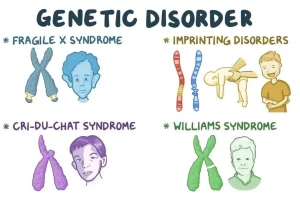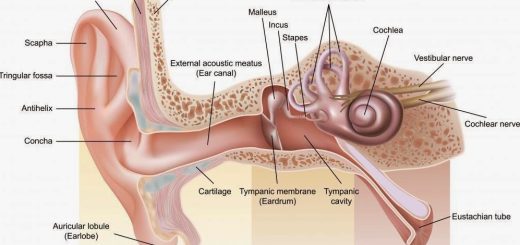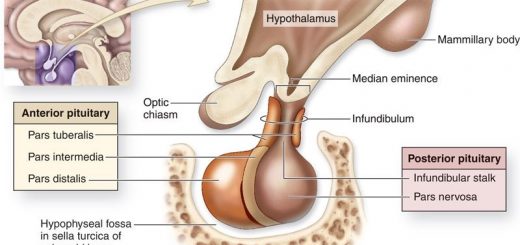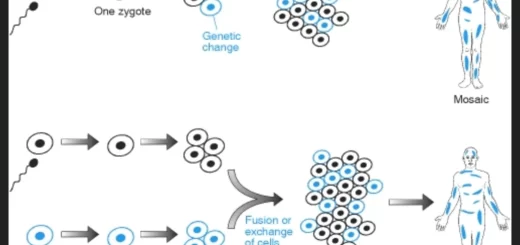Chromosomal disorders, structure, classification, and Types of numerical chromosomal abnormalities
The word chromosome is derived from the Greek language: chroma (colour) and soma (body). Structure of the chromosome in relation to the phase of the cell cycle: Each metaphase chromosome is composed of 2 chromatids held together at the centromere. The chromosome is divided by a constriction, the centromere into 2 arms; short and long (p and q respectively).
Structure of chromosomes
- According to the position of the centromere, the chromosomes are either.
- Metacentric: centromere is at the centre.
- Acrocentric: centromere is at the end.
- Submetacentric: centromere is at an intermediate position between the terminal end of the p arm and the centromere.
- In humans, the normal cell nucleus contains 46 chromosomes (22 pairs of autosomes and a single pair of sex chromosomes; XX in females and XY in males. Somatic cells are diploid (46 chromosomes), while the gametes have a haploid number of chromosomes (23 chromosomes),
Cytogenetics
Cytogenetics is the study of chromosomes and cell division using the light microscope. The appearance of the chromosomes under the microscope represents an unusual condensed state which occurs briefly during the cell cycle, during the M phase, as cells prepare to undergo cell division (metaphase).
Karyotype is a systemized array of the chromosomes of a cell either produced by a digitalized image or photography. Ideogram is a diagrammatic representation of a G-banded karyotype.
Description of a normal karyotype
A normal karyotype is written by giving first the number of chromosomes followed by a comma and then the sex chromosome complement: 46,XY and 46,XX for normal males and females, respectively.
Classification of the chromosomes
The chromosomes are classified into groups labelled A-G based on:
- Length of the chromosome.
- Position of the centromere.
- The presence or absence of satellites.
- The banding pattern.
(A: 1-3: large/metacentric), B: 4-5 (large/submetacentric), C:6-12+X (medium-sized, submetacentric and the X chromosome resembles the longer chromosome in this group), D: 13-15 (medium-sized and acrocentric with satellites). E: 16-18 (relatively short metacentric & submetacentric), F: 19-20 (short and metacentric), G: 21-22+Y (short and acrocentric with satellites, but there is no satellite for the Y chromosome).
Causes of chromosomal abnormalities
- Misrepair of broken chromosomes.
- Improper recombination following crossing over between homologous chromosomes during meiosis or to a lesser extent improper exchange between sister chromatids during mitosis.
- Mal-segregation (or abnormal separation) of chromosomes due to errors in cell division during mitosis and meiosis.
Causes of mal-segregation of chromosomes/ Errors in Cell Division:
- Non-disjunction: in which both chromatids in mitosis or pair of bivalent homologous chromosomes in meiosis fail to segregate to the opposite poles of the mother cell and hence both pass to one of the daughter cells only. This will result in one daughter cell with 45 chromosomes and one cell with 47 chromosomes.
- Anaphase lag: delayed movement of separated chromosomes or chromatids to the opposite poles of the cell during the anaphase phase resulting in the loss of one chromosome from one of the daughter cells following telophase.
- Mosaicism: The resulting mixture of two or more cell lines of different chromosome numbers in a somatic cell as a result of mitotic non-disjunction. This happens following conception and formation of a zygote from two normal gametes. This results in a zygote with different cell lines (mixoploidy). Mosaicism can result at a chromosome level due to abnormal segregation in the mitotic division after fertilization in the cells of the embryo. The cells in the body will have 2 cell lines, one with a normal chromosomal number and the other will have an extra chromosome.
Example: some cases of mosaic Down’s syndrome having a karyotype with 46,XX or XY/47,XX or XY,+21. Mosaicism can result in an abnormal phenotype depending on the following factors:
- Which chromosome/gene is involved.
- Which tissues are affected?
- The proportion and distribution of the abnormal cells.
Chromosomes abnormalities are classified according to:
A. The nature of the abnormality into:
- Numerical: involving the number of chromosomes.
- Structural: involving a change in the shape of the chromosomes.
What are the possible underlying causes of each of these types?
B. The type of chromosomes involved in
- Autosomal.
- Sex chromosomes.
C. According to the type of cells affected:
- Somatic cells: for example, cancer cells often show extreme aneuploidy with multiple chromosomal abnormalities while the remaining cells of the organism are normal.
- Germline cells: due to a defect occurring during gametogenesis, hence all cells resulting from fertilized zygote will carry the same chromosomal abnormality.
Definition of Euploidy: Normal chromosome content that, is having complete chromosome sets; n (23) in gametes, 2n (46) in somatic cells.
Types of Numerical Chromosomal Abnormalities
- Polyploidy.
- Aneuploidy.
- Mixoploidy.
(1) Polyploidy
Polyploidy is a condition in which the chromosomal number is a simple multiple of a haploid chromosome set. Examples include:
- Triploidy (69 chromosomes with XXX or XXY or XYY). There are 3 copies for each chromosome (3n) instead of a pair (2n).
- Tetraploidy exist (92 chromosomes with XXXX, XXYY). There are 4 copies for each chromosome (4n) instead of (2n).
Pathogenesis
Triploidy: results from failure of reduction division in meiosis in a germ cell, or may result from fertilization errors such as dispermy. The resulting embryo very seldom to survive to term.
Clinical example: Partial vesicular mole, in which the placenta is severely malformed and appears as a bunch of small vesicles, and the embryo is abnormal. In this example. This condition happens when the extra set of chromosomes is derived from the male partner.
Tetraploidy: failure of the first cleavage zygotic division resulting in doubling of the chromosome number immediately after fertilization (4n). The condition is very rare and always lethal.
(2) Aneuploidy
Aneuploidy is a condition in which the abnormal chromosome number does not involve the whole chromosome set. There will be in an extra (2n+1) or loss (2n-1) of one or more chromosomes. Some examples may be compatible with life. When the abnormal number involves the autosomes the abnormal phenotype is much more severe than if it involves the sex chromosome.
Pathogenesis of aneuploidy
- Nondisjunction: failure of homologous chromosome segregation during meiosis I or failure of segregations of sister chromatids during meiosis II or mitosis. Increased maternal age usually increases the incidence of non-disjunction.
- Anaphase lag: failure of a chromosome or chromatid to be incorporated into one of the daughter nuclei following cell division, as a result of delayed movement (lagging) during anaphase.
Clinical examples
Trisomy: is the presence of three copies instead of 2 of an autosome or sex chromosome in an otherwise diploid cell (2n+1). The karyotype is described as 47, Sex chromosomes XX or XY, + the number of the chromosome with an extra copy. For example, Down syndrome girl (trisomy 21 in a girl) the karyotype is described as 47, XX, +21
- Usually it causes abortion early in pregnancy.
- Only trisomies involving chromosomes 13, 18, and 21 are seen in the liveborn. Liveborn trisomies 13 (47 XX or 47XY+13) and 18 (47, XX or 47, XY, +18) (Patau and Edward Syndrome, respectively) may survive to term, but they usually die early in infancy. Trisomy 21 (Down Syndrome) may survive to the age of 40 or longer.
- Trisomy for sex chromosomes such as XXX (Trisomy X), XXY (Klinefelter Syndrome), XYY (Multiple Y Syndrome) are less deleterious than the abnormal number of autosomes and they usually survive with a normal life span.
Monosomy: is the presence of one member of a chromosome pair in a Karyotype, (2n-1), The total number of chromosomes will be decreased and the karyotype will be 45, sex chromosomes, the number of the chromosome missing. For example, monosomy of chromosome 8 in a female is written as 45, XX, -8
- If monosomy involves an autosomal chromosome, it will be fatal and result in abortion.
- X chromosome monosomy (45X) is the only live birth example of monosomy, but commonly also causes abortion. Few cases survive and present as Turner Syndrome. The phenotype is of a female with close to normal intelligence but may have some learning disability. They are infertile and show some physical features (such as webbing of the neck and low hairline) and skeletal signs (such as short stature).
(3) Mixoploidy
Having two or more genetically different cell lineages within one individual is called mixoploidy. The genetically different cell lineages could arise from the same zygote (mosaicism, described earlier) such as mosaic Down in which a proportion of the cells has normal chromosome number (46 chromosomes) and another proportion has trisomy of chromosome 21 (47, XX or XY, +21).
The clinical phenotype of the mosaic Down (46, XY or XX/47 XY or XX, +21) is usually milder than the pure non-disjunction Down Syndrome, in which all the cells are trisomic for chromosome 21 (47, XX or XY, +21 in 100% of the cells of the body). Mixoploidy may result from the fusion of 2 different twin zygotes resulting in chimerism.
You can subscribe to science online on YouTube from this link: Science Online
You can download Science Online application on Google Play from this link: Science Online Apps on Google Play
Genes, Chromosomes, Proteins, Bacteriophages & Quantity of DNA in the cells
Nucleus components, function, diagram & classification of chromosomes
Cells types, Chromosomes, Cell division, Phases of mitosis division & Liver Transplantation
Packaging of DNA, Genome, chromosomal proteins, DNA in Prokaryotes & Eukaryotes




